» Edit Band Information
» Edit Albums
» Add a Review
» Add an Album
» Add News | Duke Ellington
Duke Ellington was the most important composer in the history of jazz as well as being a bandleader who held his large group
togethercontinuously for almost 50 years. The two aspects of his career were related; Ellington used his band as a musical laboratory for his
newcompositions and shaped his writing specifically to showcase the talents of his bandmembers, many of whom remained with him for long
periods.Ellington also wrote film scores and stage musicals, and several of his instrumental works were adapted into songs that became
standards. Inaddition to touring year in and year out, ...read more
Duke Ellington was the most important composer in the history of jazz as well as being a bandleader who held his large group
togethercontinuously for almost 50 years. The two aspects of his career were related; Ellington used his band as a musical laboratory for his
newcompositions and shaped his writing specifically to showcase the talents of his bandmembers, many of whom remained with him for long
periods.Ellington also wrote film scores and stage musicals, and several of his instrumental works were adapted into songs that became
standards. Inaddition to touring year in and year out, he recorded extensively, resulting in a gigantic body of work that was still being
assessed a quartercentury after his death.
Ellington was the son of a White House butler, James Edward Ellington, and thus grew up in comfortable surroundings. He began piano
lessons atage seven and was writing music by his teens. He dropped out of high school in his junior year in 1917 to pursue a career in music.
At first, hebooked and performed in bands in the Washington, D.C., area, but in September 1923 the Washingtonians, a five-piece group of
which he was amember, moved permanently to New York, where they gained a residency in the Times Square venue The Hollywood Club
(later The KentuckyClub). They made their first recordings in November 1924, and cut tunes for different record companies under a variety of
pseudonyms, so thatseveral current major labels, notably Sony, Universal, and BMG, now have extensive holdings of their work from the
period in their archives,which are reissued periodically.
The group gradually increased in size and came under Ellington's leadership. They played in what was called "jungle" style, their
slyarrangements often highlighted by the muted growling sound of trumpeter James "Bubber" Miley. A good example of this is Ellington's
firstsignature song, "East St. Louis Toodle-oo," which the band first recorded for Vocalion Records in November 1926, and which became their
firstchart single in a re-recorded version for Columbia in July 1927.
The Ellington band moved uptown to The Cotton Club in Harlem on December 4, 1927. Their residency at the famed club, which lasted more
thanthree years, made Ellington a nationally known musician due to radio broadcasts that emanated from the bandstand. In 1928, he had
two two-sided hits: "Black and Tan Fantasy"/"Creole Love Call" on Victor (now BMG) and "Doin' the New Low Down"/"Diga Diga Doo" on OKeh
(nowSony), released as by the Harlem Footwarmers. "The Mooche" on OKeh peaked in the charts at the start of 1929.
While maintaining his job at The Cotton Club, Ellington took his band downtown to play in the Broadway musical Show Girl, featuring the
music ofGeorge Gershwin, in the summer of 1929. The following summer, the band took a leave of absence to head out to California and
appear in thefilm Check and Double Check. From the score, "Three Little Words," with vocals by the Rhythm Boys featuring Bing Crosby,
became a numberone hit on Victor in November 1930; its flip side, "Ring Dem Bells," also reached the charts.
The Ellington band left The Cotton Club in February 1931 to begin a tour that, in a sense, would not end until the leader's death 43 years
later. Atthe same time, Ellington scored a Top Five hit with an instrumental version of one of his standards, "Mood Indigo" released on Victor.
Therecording was later inducted into the Grammy Hall of Fame. As "the Jungle Band," the Ellington Orchestra charted on Brunswick later in
1931 with"Rockin' in Rhythm" and with the lengthy composition "Creole Rhapsody," pressed on both sides of a 78 single, an indication that
Ellington's goalsas a writer were beginning to extend beyond brief works. (A second version of the piece was a chart entry on Victor in March
1932.) "LimehouseBlues" was a chart entry on Victor in August 1931, then in the winter of 1932, Ellington scored a Top Ten hit on Brunswick
with one of his best-remembered songs, "It Don't Mean a Thing (If It Ain't Got That Swing)," featuring the vocals of Ivie Anderson. This was
still more than threeyears before the official birth of the swing era, and Ellington helped give the period its name. Ellington's next major hit
was another signaturesong for him, "Sophisticated Lady." His instrumental version became a Top Five hit in the spring of 1933, with its flip
side, a treatment of "StormyWeather," also making the Top Five.
The Ellington Orchestra made another feature film, Murder at the Vanities, in the spring of 1934. Their instrumental rendition of "Cocktails
forTwo" from the score hit number one on Victor in May, and they hit the Top Five with both sides of the Brunswick release "Moon
Glow"/"Solitude"that fall. The band also appeared in the Mae West film Belle of the Nineties and played on the soundtrack of Many Happy
Returns. Later in thefall, the band was back in the Top Ten with "Saddest Tale," and they had two Top Ten hits in 1935, "Merry-Go-Round"
and "Accent on Youth."While the latter was scoring in the hit parade in September, Ellington recorded another of his extended compositions,
"Reminiscing in Tempo,"which took up both sides of two 78s. Even as he became more ambitious, however, he was rarely out of the hit
parade, scoring another Top Tenhit, "Cotton," in the fall of 1935, and two more, "Love Is Like a Cigarette" and "Oh Babe! Maybe Someday," in
1936. The band returned toHollywood in 1936 and recorded music for the Marx Brothers' film A Day at the Races and for Hit Parade of 1937.
Meanwhile, they were scoringTop Ten hits with "Scattin' at the Kit-Kat" and the swing standard "Caravan," co-written by valve trombonist
Juan Tizol, and Ellington wascontinuing to pen extended instrumental works such as "Diminuendo in Blue" and "Crescendo in Blue." "If You
Were in My Place (What Would YouDo?)," a vocal number featuring Ivie Anderson, was a Top Ten hit in the spring of 1938, and Ellington
scored his third number one hit in April withan instrumental version of another standard, "I Let a Song Go out of My Heart." In the fall, he
was back in the Top Ten with a version of theBritish show tune "Lambeth Walk."
The Ellington band underwent several notable changes at the end of the 1930s. After several years recording more or less regularly
forBrunswick, Ellington moved to Victor. In early 1939 Billy Strayhorn, a young composer, arranger, and pianist, joined the organization. He
did notusually perform with the orchestra, but he became Ellington's composition partner to the extent that soon it was impossible to tell
whereEllington's writing left off and Strayhorn's began. Two key personnel changes strengthened the outfit with the acquisition of bassist
JimmyBlanton in September and tenor saxophonist Ben Webster in December. Their impact on Ellington's sound was so profound that their
relativelybrief tenure has been dubbed "the Blanton-Webster Band" by jazz fans. These various changes were encapsulated by the Victor
release ofStrayhorn's "Take the 'A' Train," a swing era standard, in the summer of 1941. The recording was later inducted into the Grammy
Hall of Fame.
That same summer, Ellington was in Los Angeles, where his stage musical, Jump for Joy, opened on July 10 and ran for 101
performances.Unfortunately, the show never went to Broadway, but among its songs was "I Got It Bad (And That Ain't Good)," another
standard. The U.S.entry into World War II in December 1941 and the onset of the recording ban called by the American Federation of
Musicians in August 1942slowed the Ellington band's momentum. Unable to record and with touring curtailed, Ellington found an opportunity
to return to extendedcomposition with the first of a series of annual recitals at Carnegie Hall on January 23, 1943, at which he premiered
"Black, Brown and Beige."And he returned to the movies, appearing in Cabin in the Sky and Reveille with Beverly. Meanwhile, the record
labels, stymied for hits, beganlooking into their artists' back catalogs. Lyricist Bob Russell took Ellington's 1940 composition "Never No
Lament" and set a lyric to it, creating"Don't Get Around Much Anymore." The Ink Spots scored with a vocal version (recorded a cappella), and
Ellington's three-year-old instrumentalrecording was also a hit, reaching the pop Top Ten and number one on the recently instituted R&B
charts. Russell repeated his magic withanother 1940 Ellington instrumental, "Concerto for Cootie" (a showcase for trumpeter Cootie Williams),
creating "Do Nothin' Till You Hear fromMe." Nearly four years after it was recorded, the retitled recording hit the pop Top Ten and number one
on the R&B charts for Ellington in early1944, while newly recorded vocal cover versions also scored. Ellington's vintage recordings became
ubiquitous on the top of the R&B chartsduring 1943-1944; he also hit number one with "A Slip of the Lip (Can Sink a Ship)," "Sentimental
Lady," and "Main Stem." With the end of therecording ban in November 1944, Ellington was able to record a song he had composed with his
saxophonist, Johnny Hodges, set to a lyric byDon George and Harry James, "I'm Beginning to See the Light." The James recording went to
number one in April 1945, but Ellington's recordingwas also a Top Ten hit.
With the end of the war, Ellington's period as a major commercial force on records largely came to an end, but unlike other big bandleaders,
whodisbanded as the swing era passed, Ellington, who predated the era, simply went on touring, augmenting his diminished road revenues
with hissongwriting royalties to keep his band afloat. In a musical climate in which jazz was veering away from popular music and toward
bebop, andpopular music was being dominated by singers, the Ellington band no longer had a place at the top of the business; but it kept
working. AndEllington kept trying more extended pieces. In 1946, he teamed with lyricist John Latouche to write the music for the Broadway
musical Beggar'sHoliday, which opened on December 26 and ran 108 performances. And he wrote his first full-length background score for a
feature film with1950's The Asphalt Jungle.
The first half of the 1950s was a difficult period for Ellington, who suffered many personnel defections. (Some of those musicians returned
later.)But the band made a major comeback at the Newport Jazz Festival on July 7, 1956, when they kicked into a version of "Dimuendo and
Crescendoin Blue" that found saxophonist Paul Gonsalves taking a long, memorable solo. Ellington appeared on the cover of Time magazine,
and he signeda new contract with Columbia Records, which released Ellington at Newport, the best-selling album of his career. Freed of the
necessity of writinghits and spurred by the increased time available on the LP record, Ellington concentrated more on extended compositions
for the rest of hiscareer. His comeback as a live performer led to increased opportunities to tour, and in the fall of 1958 he undertook his first
full-scale tour ofEurope. For the rest of his life, he would be a busy world traveler.
Ellington appeared in and scored the 1959 film Anatomy of a Murder, and its soundtrack won him three of the newly instituted Grammy
Awards,for best performance by a dance band, best musical composition of the year, and best soundtrack. He was nominated for an Academy
Award forhis next score, Paris Blues (1961). In August 1963, his stage work My People, a cavalcade of African-American history, was
mounted in Chicagoas part of the Century of Negro Progress Exposition.
Meanwhile, of course, he continued to lead his band in recordings and live performances. He switched from Columbia to Frank Sinatra's
Repriselabel (purchased by Warner Bros. Records) and made some pop-oriented records that dismayed his fans but indicated he had not
given up onbroad commercial aspirations. Nor had he abandoned his artistic aspirations, as the first of his series of sacred concerts,
performed at GraceCathedral in San Francisco on September 16, 1965, indicated. And he still longed for a stage success, turning once again
to Broadway with themusical Pousse-Café, which opened on March 18, 1966, but closed within days. Three months later, the Sinatra film
Assault on a Queen, with anEllington score, opened in movie houses around the country. (His final film score, for Change of Mind, appeared in
1969.)
Ellington became a Grammy favorite in his later years. He won a 1966 Grammy for best original jazz composition for "In the Beginning,
God,"part of his sacred concerts. His 1967 album Far East Suite, inspired by a tour of the Middle and Far East, won the best instrumental
jazzperformance Grammy that year, and he took home his sixth Grammy in the same category in 1969 for And His Mother Called Him Bill, a
tribute toStrayhorn, who had died in 1967. "New Orleans Suite" earned another Grammy in the category in 1971, as did "Togo Brava Suite" in
1972, andthe posthumous The Ellington Suites in 1976.
Ellington continued to perform regularly until he was overcome by illness in the spring of 1974, succumbing to lung cancer and pneumonia.
Hisdeath did not end the band, which was taken over by his son Mercer, who led it until his own death in 1996, and then by a grandson.
Meanwhile,Ellington finally enjoyed the stage hit he had always wanted when the revue Sophisticated Ladies, featuring his music, opened on
Broadway onMarch 1, 1981, and ran 767 performances.
The many celebrations of the Ellington centenary in 1999 demonstrated that he continued to be regarded as the major composer of jazz. If
thatseemed something of an anomaly in a musical style that emphasizes spontaneous improvisation over written composition, Ellington was
talentedenough to overcome the oddity. He wrote primarily for his band, allowing his veteran players room to solo within his compositions,
and as aresult created a body of work that seemed likely to help jazz enter the academic and institutional realms, which was very much its
direction atthe end of the 20th century. In that sense, he foreshadowed the future of jazz and could lay claim to being one of its most
influentialpractitioners. « hide |
Similar Bands: Herbie Nichols, Thelonious Monk, Charles Mingus, Count Basie, Dizzy Gillespie |
|
| LPs | 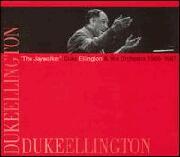 | The Jaywalker
2004
|
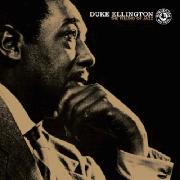 | The Feeling of Jazz
1988
|
 | The Intimacy of the Blues
1986
|
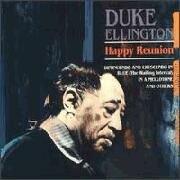 | Happy Reunion
1985
|
 | Featuring Paul Gonsalves
1985
|
 | Unknown Session
1979
|
 | The Intimate Ellington
1977
|
 | The Ellington Suites
1976
|
 | Duke Ellington's Jazz Violin Session
1976
|
 | Up in Duke's Workshop
1976
|
 | The Afro-Eurasian Eclipse
1975
|
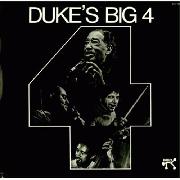 | Duke's Big 4
1974
|
 | Recollections of the Big Band Era
1974
|
 | The Pianist
1974
|
 | Latin American Suite
1972
|
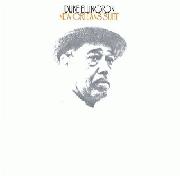 | New Orleans Suite
1970
|
 | Orchestral Works
1970
|
 | Collages
1969
|
 | ...and His Mother Called Him Bill
1968
|
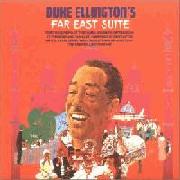 | The Far East Suite
1967
|
 | The Popular Duke Ellington
1967
|
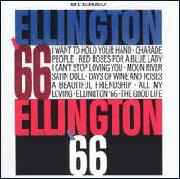 | Ellington '66
1965
|
 | Duke Ellington Plays Mary Poppins
1965
|
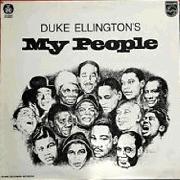 | My People
1965
|
 | Ellington '65
1965
|
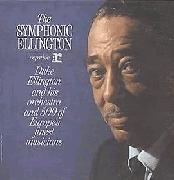 | The Symphonic Ellington
1964
|
 | Afro-Bossa
1963
|
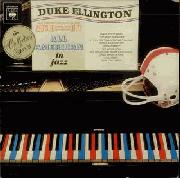 | All American In Jazz
1962
|
 | Midnight In Paris
1962
|
 | Paris Blues OST
1961
|
 | Piano in the Foreground
1961
|
 | Swinging Suites by Edward E. & Edward G.
1960
|
 | Piano in the Background
1960
|
 | The Nutcracker Suite
1960
|
 | Blues In Orbit
1960
|
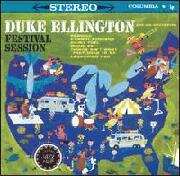 | Festival Session
1959
|
 | Anatomy of a Murder OST
1959
|
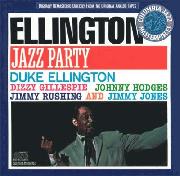 | Jazz Party
1959
|
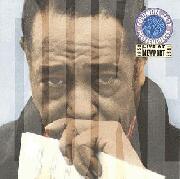 | Newport 1958
1958
|
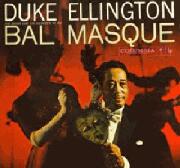 | Duke Ellington at the Bal Masque
1958
|
 | The Cosmic Scene
1958
|
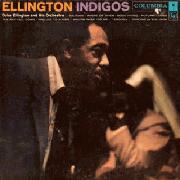 | Ellington Indigos
1958
|
 | Black Brown And Beige
1958
|
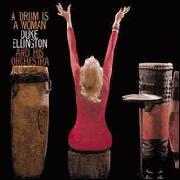 | A Drum Is a Woman
1957
|
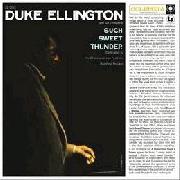 | Such Sweet Thunder
1957
|
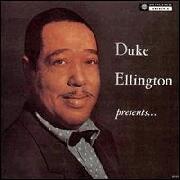 | Duke Ellington Presents...
1956
|
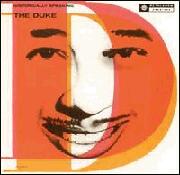 | Historically Speaking
1956
|
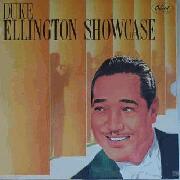 | Ellington Showcase
1955
|
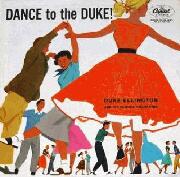 | Dance to the Duke!
1954
|
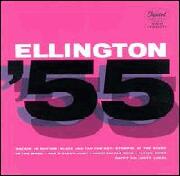 | Ellington '55
1953
|
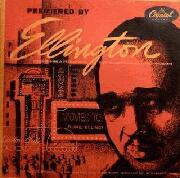 | Premiered by Ellington
1953
|
 | The Duke Plays Ellington
1953
|
 | Ellington Uptown
1952
|
 | Masterpieces By Ellington
1950
|
 | Liberian Suite
1948
|
 | Duke Ellington Plays the Blues
1947
|
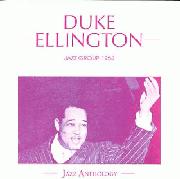 | Jazz Group 1964
|
 | Will Big Bands Ever Come Back?
|
|
| Live Albums |  | Ellington at Newport 1956 (Complete)
2009
|
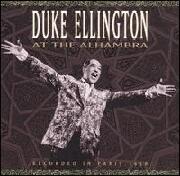 | Duke Ellington at the Alhambra
2002
|
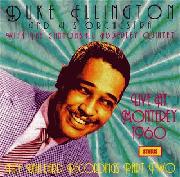 | The Unheard Recordings, Pt. 2: Live at Monterey 60
1996
|
 | The Unheard Recordings, Pt. 1: Live at Monterey 60
1996
|
 | Live at the Whitney
1995
|
 | Hot Summer Dance
1991
|
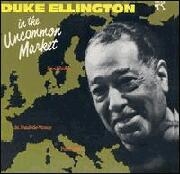 | In the Uncommon Market
1986
|
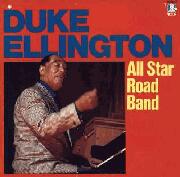 | All Star Road Band
1983
|
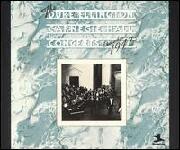 | The Carnegie Hall Concerts: December 1947
1977
|
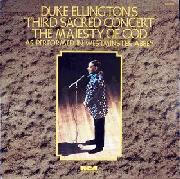 | Third Sacred Concert
1975
|
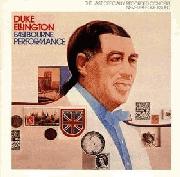 | Eastbourne Performance
1975
|
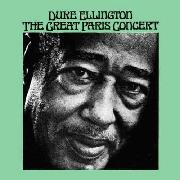 | The Great Paris Concert
1973
|
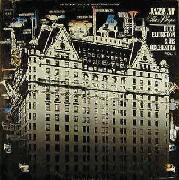 | Jazz at the Plaza Vol. II
1973
|
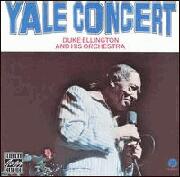 | Yale Concert
1973
|
 | Togo Brava Suite
1971
|
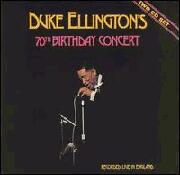 | 70th Birthday Concert
1970
|
 | Second Sacred Concert
1968
|
 | A Concert of Sacred Music
1966
|
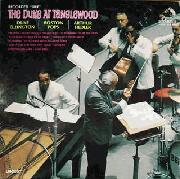 | The Duke at Tanglewood
1966
|
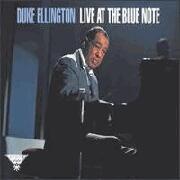 | Live at the Blue Note
1959
|
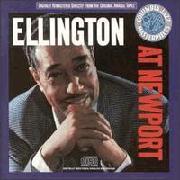 | Ellington At Newport
1956
|
| Compilations |  | The Duke: The Columbia Years (1927-1962)
2000
|
 | A Portrait Of Duke Ellington
1997
|
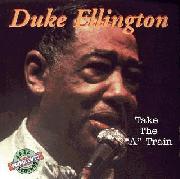 | Take the 'A' Train
1994
|
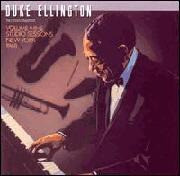 | Studio Sessions New York, 1968
1987
|
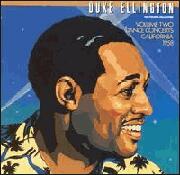 | Dance Concerts, California 1958
1987
|
 | The Suites, New York 1968 & 1970
1987
|
 | Studio Sessions New York & Chicago, 1965-66, 1971
1987
|
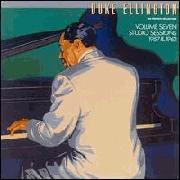 | Studio Sessions 1957 & 1962
1987
|
 | Studio Sessions, New York 1963
1987
|
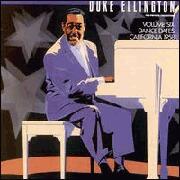 | Dance Dates, California 1958
1987
|
 | Studio Sessions, New York 1962
1987
|
 | The Blanton - Webster Band
1986
|
 | Duke 56/62 Vol. 1
1984
|
 | Duke 56/62 Vol. 2
1984
|
 | Duke 56/62 Vol. 3
1984
|
 | The Girl's Suite and The Perfume Suite
1982
|
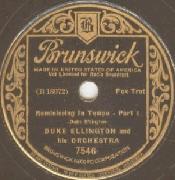 | Reminiscing in Tempo (Parts I-IV)
1935
|
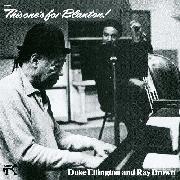 |
|
 |
|
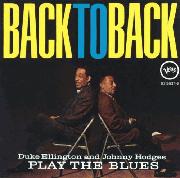 |
|
 |
|
Contributors: Chrysalis76, MrHarrison, rockandmetaljunkie, liledman, JPDesdub, musicman, nylonhair, gagnonov, Peporro98, TheCrocodile, Iai, liledman,
|
